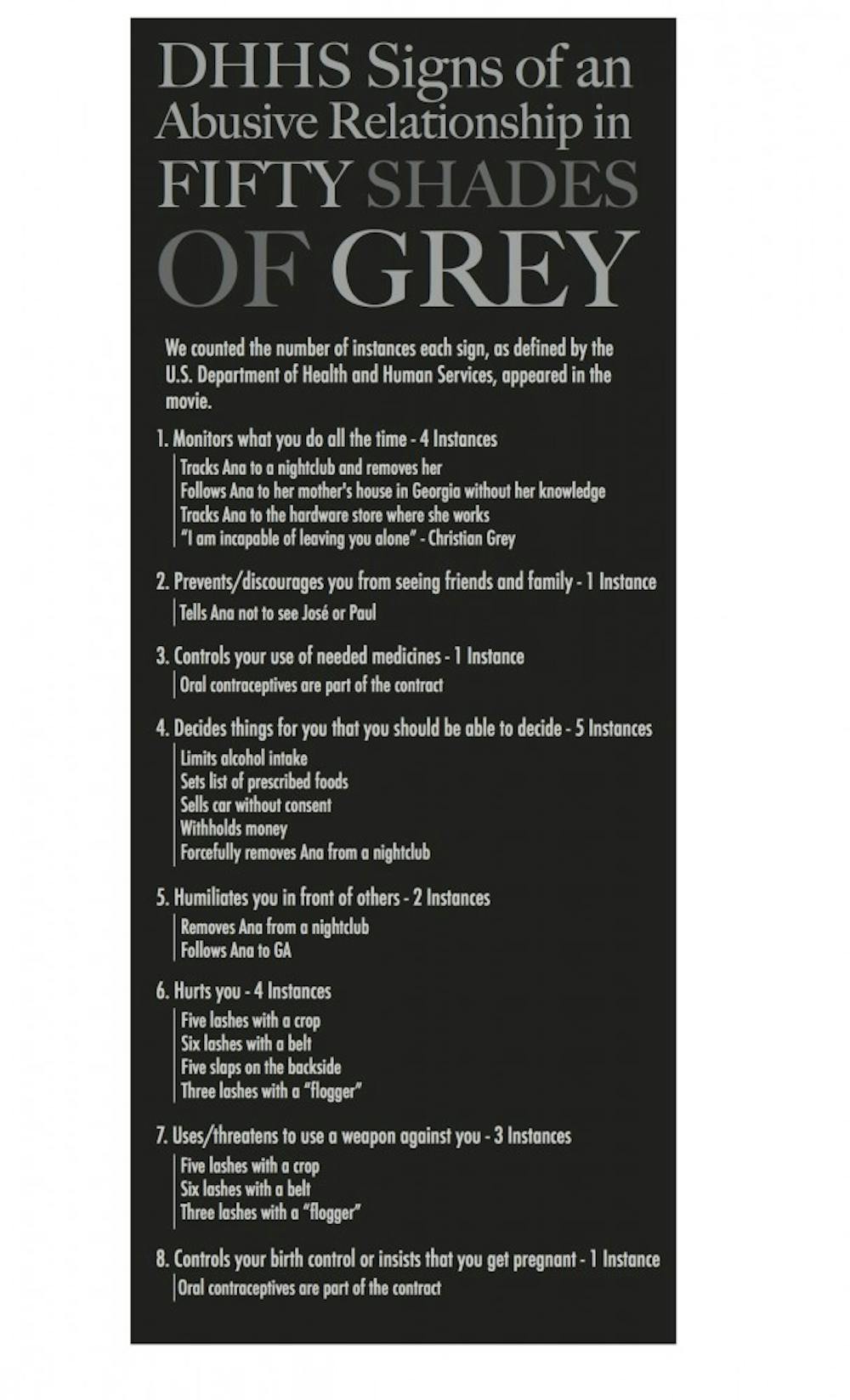While “50 Shades of Grey” opened to soaring box office sales a little over a week ago, evidence suggests the movie may showcase several of the signs of abusive relationships set out by the U.S. Department of Health and Human Services.
The U.S. Department of Health and Human Services lists 18 signs of abusive relationships on its website — eight of which appear in the relationship between Ana Steele and Christian Grey, the two main characters in “50 Shades of Grey.” Four are depicted more than once.
Over the course of the movie, Christian monitors Ana’s movements without her consent and discourages her from seeing other male friends. Grey also contractually requires her to take oral contraceptives, and limits her to a diet of prescribed foods and limited alcohol intake on five separate occasions. He verbally threatens her with physical punishment twice. In one scene, he beats her six times while she cries in pain and humiliation.
All of these meet the DHHS standards of an abusive relationship.
While relationships involving bondage, dominance, submission and masochism (BDSM) are supposed to occur with mutual consent, the movie depicts elements of unhealthy levels of domination in all aspects of the relationship — not just in the BDSM scenes.
“I exercise control in all things,” Grey said in one scene.
Grey fulfills the DHHS abusive relationship criterion of “[monitoring] what [one’s partner is] doing all the time” on four occasions. For example, in one scene, he follows Ana to her mother’s house in Georgia without her knowledge or consent. In another, he illegally tracks her phone to a nightclub, from which he then physically removes her, carrying her unconscious body back to his hotel room without telling anyone.
These elements of control are psychological as well as physical. By juxtaposing statements such as “I am incapable of leaving you alone” with “you can leave at any time,” Grey engages in emotionally manipulative — and questionably abusive — behavior.
For example, Grey garners Steele’s sympathy by opening up about his abusive past — even telling her that she should not love him because he is psychologically damaged. This actually entices her to remain in the relationship to help him, causing her to feel she has a duty to please and care for him.
“[Grey’s] confessions of early physical and sexual abuse, along with an almost child-like willingness to open up his painful past to her and her alone, keep [Ana] hooked,” Leslie Morgan Steiner wrote in a recent piece for the Washington Post.
Steele clearly shows the effects of this emotional manipulation. On one occasion, she cries on the phone to her mother, while in another scene she jerks her knee away as Christian touches her under the dinner table.
“Why do you want to punish me? Why do you want to hurt me?” Steele asks Grey towards the end of the movie.
While Steele does not explicitly revoke her consent until the end of the film, she expresses dissatisfaction with the dominant-submissive relationship dynamic throughout.
“You will never do that to me again,” Steele said following one of the final scenes in which Grey beats her with a belt.
Steele’s unhappy compliance with Grey’s physical violence foregrounds a relationship in which abuse occurs with the victim’s consent — as confirmed by DHHS reference materials.







